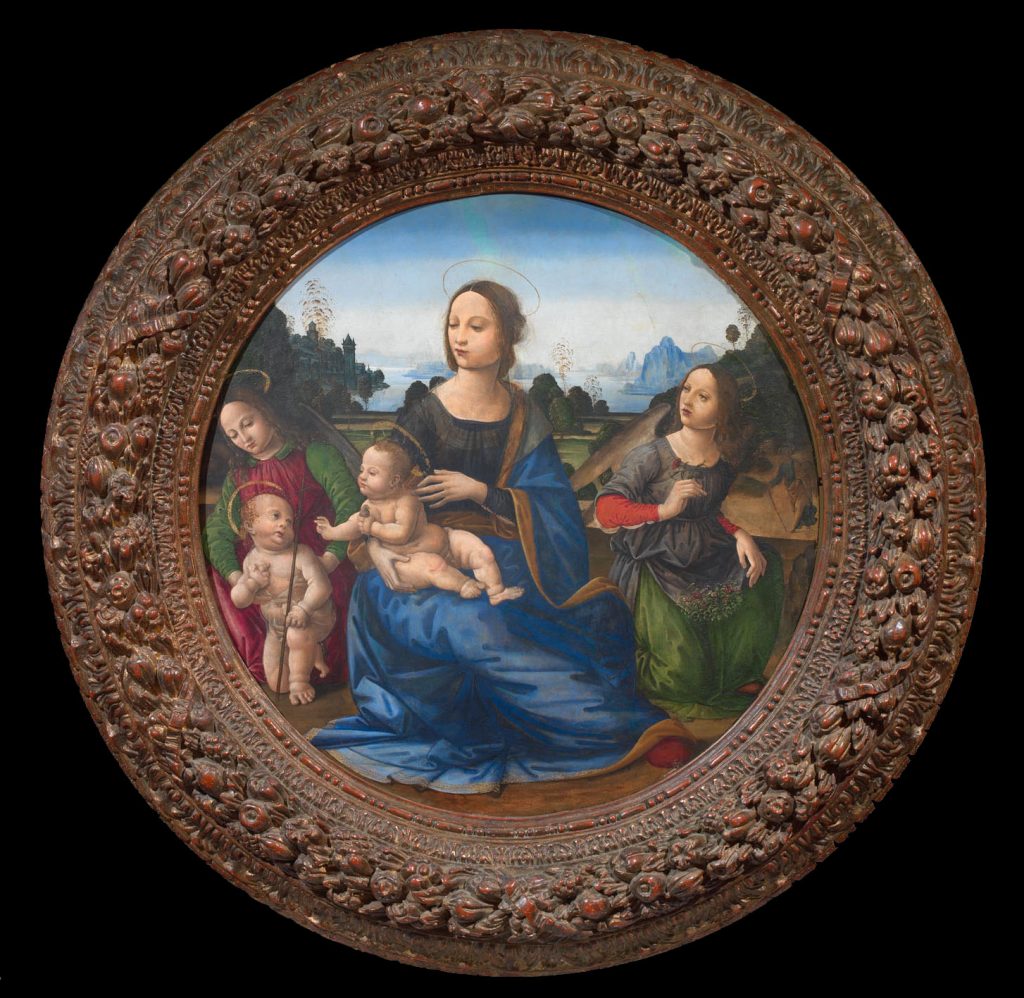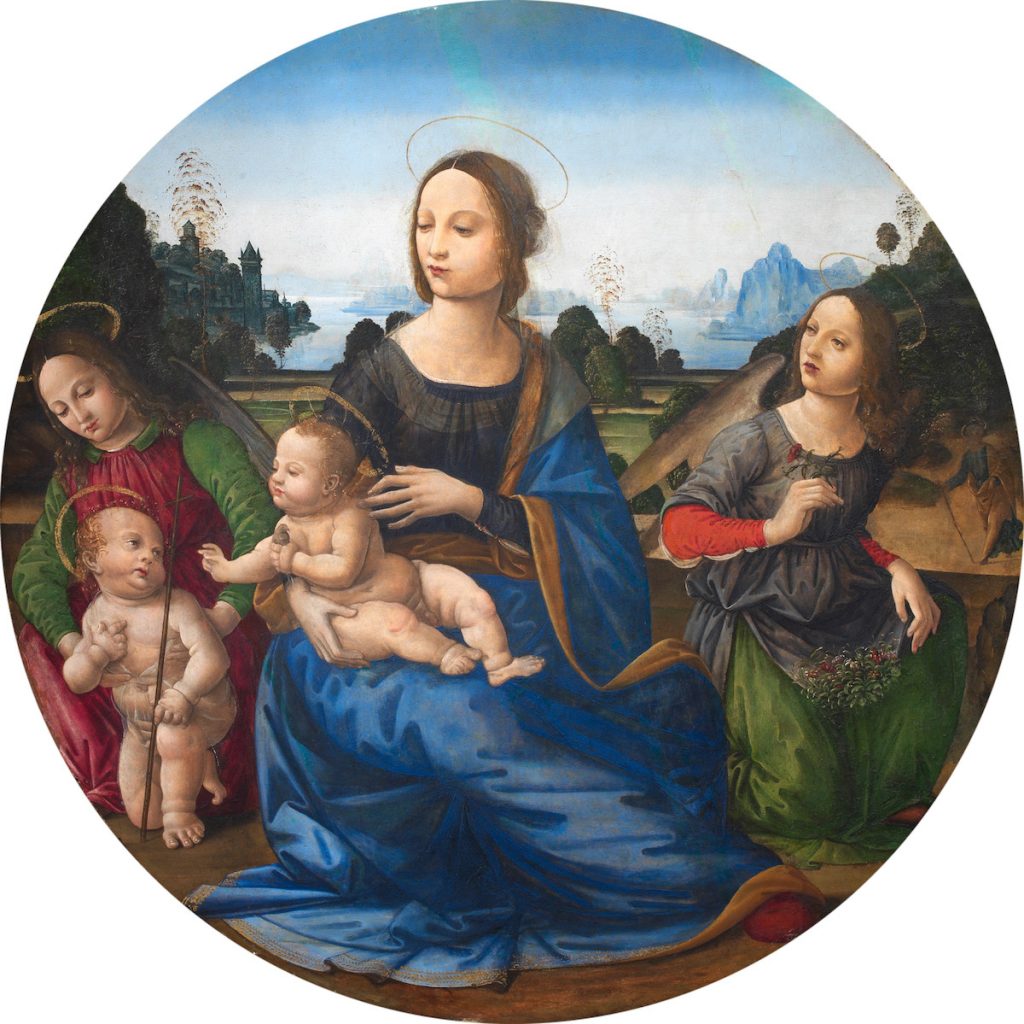“TOMMASO”
Florence, active in the first quarter of the 16th century
Holy Family with the young Saint John and Angels
tempera on panel, cm 109 diameter
This tondo depicts the Madonna and Child seated on the ground and set within a landscape, with two kneeling angels, one on either side. One of the angels is holding red flowers that, on the basis of the ‘Song of Songs’ in the Old Testament, are interpreted as attributes of the Virgin, while the other is holding the young John the Baptist, dressed only in very delicate transparent fabric, who seems to be communicating with his little cousin Jesus. The Christ Child is seated on Mary’s lap and turns towards John in blessing, offering him the goldfinch, symbol of the Passion of Christ. In the background, immersed in the landscape, we can see Saint Joseph walking towards the holy group.
This wonderful composition is typical of the work of ‘Tommaso’, who studied directly under Lorenzo di Credi, bringing Verrocchio’s style into the 16th century. This fictitious name, created by Giovanni Morelli in the late 19th century, is applied to a clearly defined artistic figure who often reflects the work of his master with great accuracy, as in the case of this panel. The landscape, with an almost Flemish view of the village on the lake, evokes the Florentine work of Fra Bartolomeo and the young Raphael, enabling us to date the work to around 1505–1506.
Please note that this piece has been “notified” with a Ministerial Decree dated 11.18.2008. The Ministry has declared its importance in the context of the Italian cultural patrimony. This piece cannot be exported outside Italy.
Pubblications:
“Le visioni di un grande collezionista”, exhibition catalogue edited by Alessandro Nesi, Frascione Arte, Florence, 2009, pp. 38-39.


